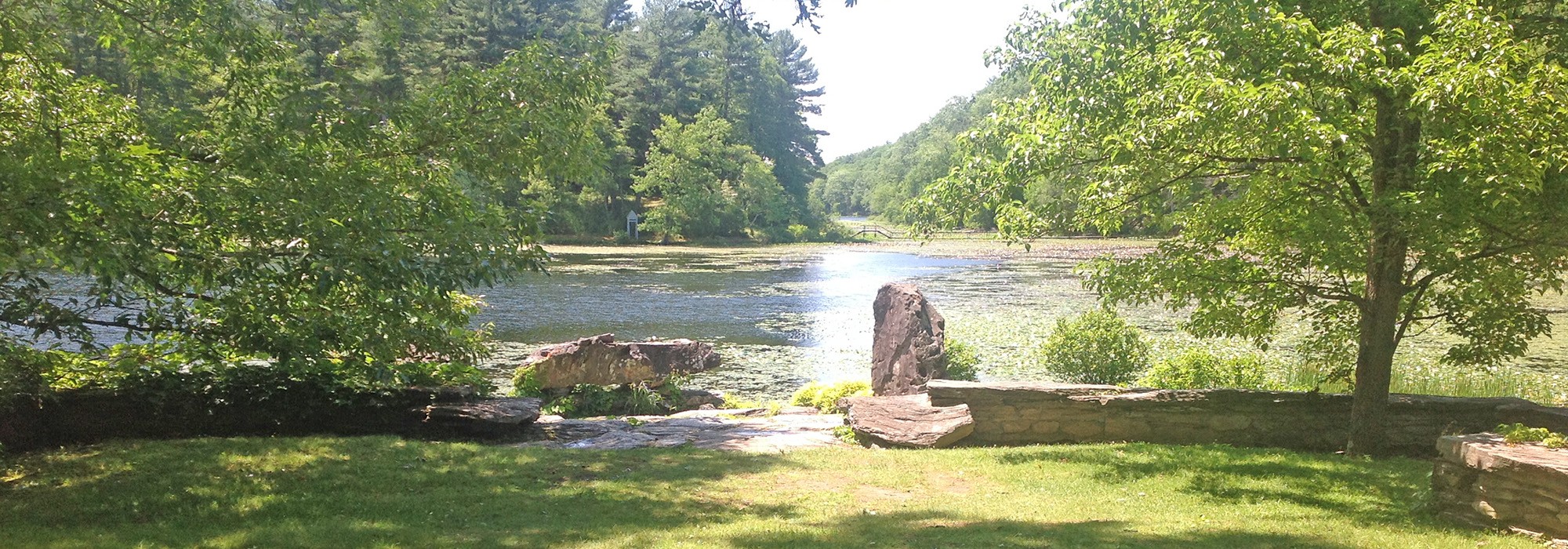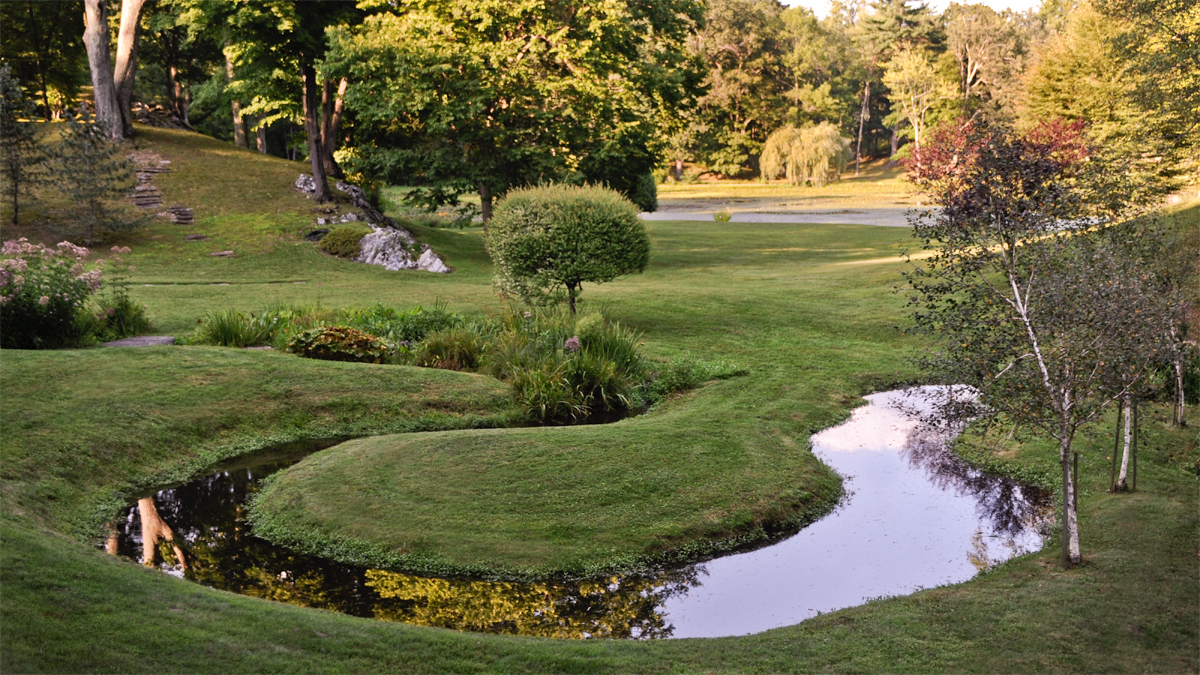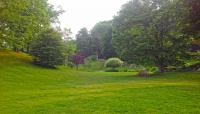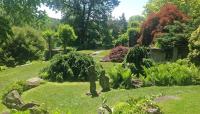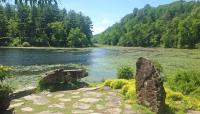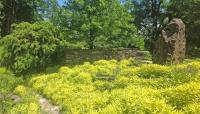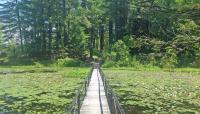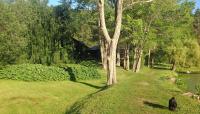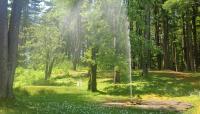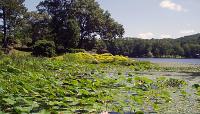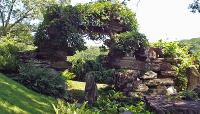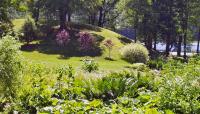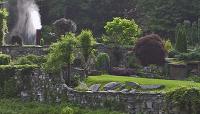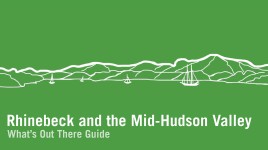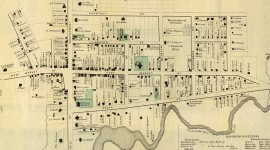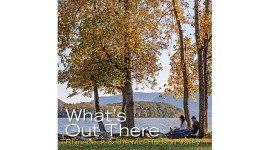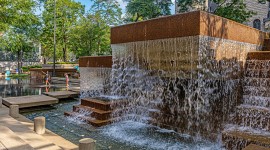Landscape Information
The result of decades of passion and dedication, this 185-acre property, surrounded by woodlands, is situated a mile east of the Taconic State Parkway. Set within a natural bowl that wraps around the 40-acre Tyrrel Lake, the property, whose name references a poem by William Butler Yeats, affords visitors a sense of seclusion and privacy. A masterpiece of Eastern influence on a distinctly American landscape, the grounds were designed by painter Walter Beck, his wife, gardener Marion Beck, and landscape architect Lester Collins.
In the 1930s the Becks established a Queen Anne-style mansion (no longer extant) on the property. Instead of surrounding the residence with typical English gardens, the Becks went on a yearlong sojourn to search for an alternative. In London, Walter Beck discovered the scroll paintings of the garden of eighth-century Chinese poet and painter Wang Wei. The paintings inspired him to create a series of self-contained landscapes using natural elements such as rocks, streams, and plants to compose and frame nature. The three–dimensional compositions, which he termed “cup gardens,” are intended to be both viewed as scenes and experienced directly. In 1938 the Becks met and collaborated with Lester Collins, who continued to shape the property over the next 55 years.
Upon Walter Beck’s death in 1954, Collins reinterpreted Beck’s work on the property. A student of the ancient Japanese gardening handbook Sensai Hisho, or Secret Garden Book, Collins incorporated Beck’s many cup gardens into a larger, more unified design, allowing visitors to gracefully traverse the space along paths of gravel, grass, or brick that surround the lake. Following Marion Beck’s death in 1959, responsibility for the garden transferred to the Innisfree Foundation, which was created to preserve the property and continues to maintain it today. The garden opened to the public in 1960. Innisfree was listed in the National Register of Historic Places in 2019.



